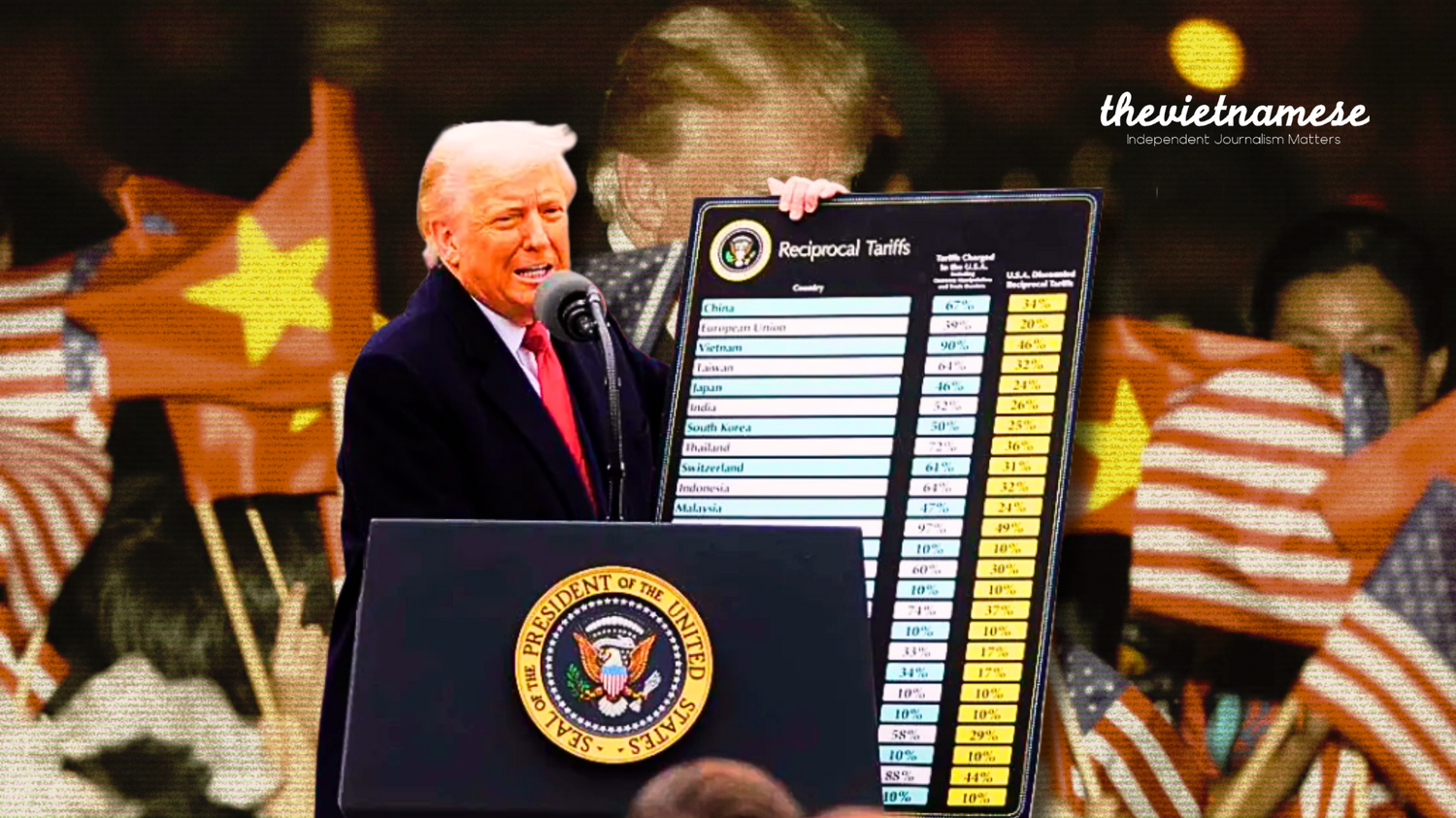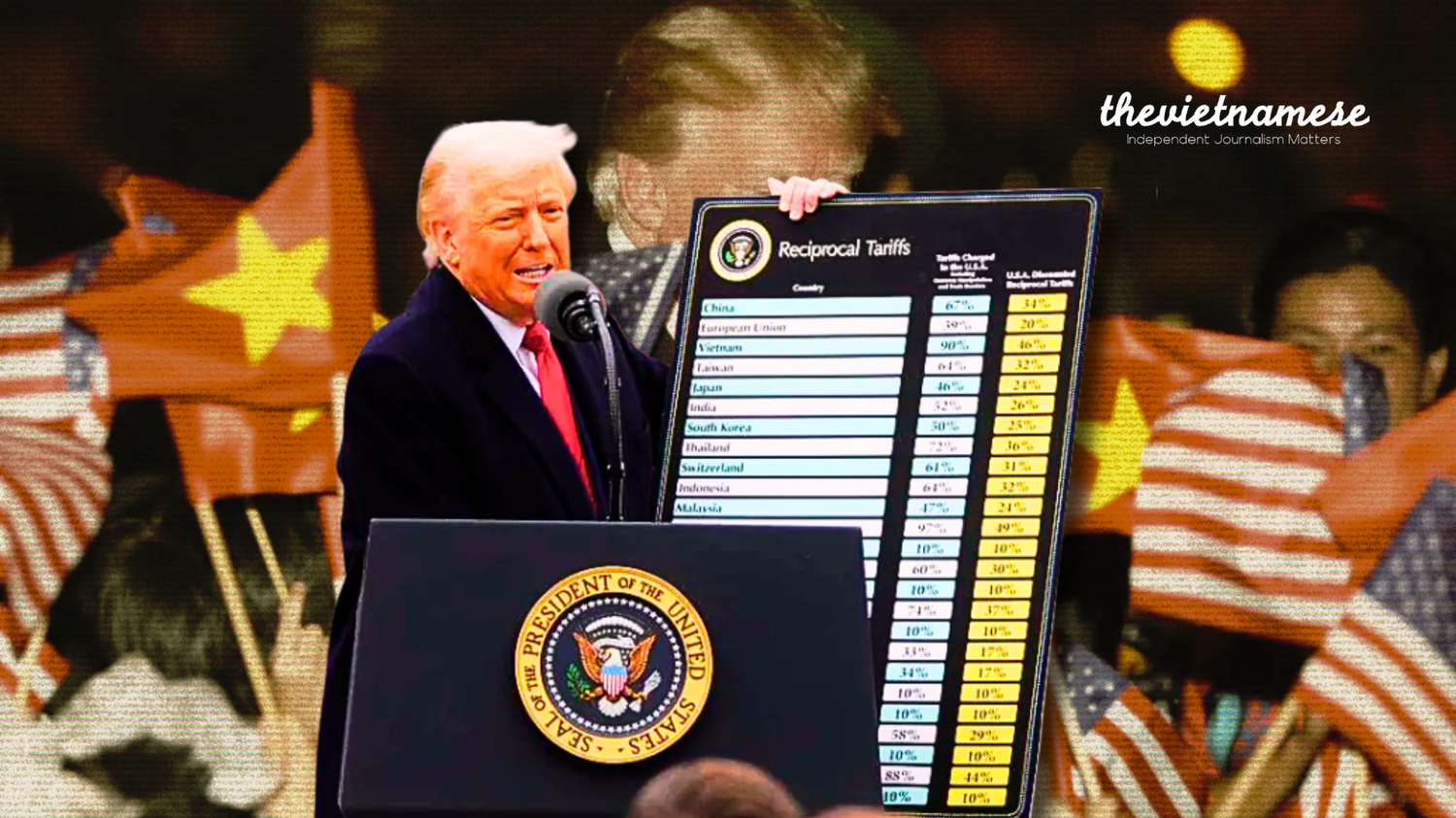
By August 1, the United States is expected to announce multiple trade agreements, including with Việt Nam. Here is the rundown of what happened and what to expect ahead of the tariff negotiation deadlines.
- Việt Nam Did Not Expect Trump 2.0 to Turn Out This Way
Before the tariff announcement on “Liberation Day” on April 2, leaders in Hà Nội were confident in their ability to navigate the second Trump administration, as Việt Nam was relatively unscathed during the first administration.
Việt Nam proactively attempted to appeal to Trump’s inner circle – most prominently through giving business exemptions to Elon Musk’s Starlink to operate in Việt Nam, an unprecedented move in the sensitive telecommunications industry, or fast-tracking the bureaucratic processing for the Trump Organization’s golf courses. The mood in Hà Nội was optimistic, as even key industry watchers were expecting a 20-25% tariff rate in the worst-case scenario.
In private, many even expressed optimism about Việt Nam benefiting more from Trump’s volatile and anti-China trade policies. They also privately assessed that Trump likely has his own personal affection towards Việt Nam, which was amplified through his visits in the last term, during which he was warmly welcomed by Vietnamese people lining up on the street waving Vietnamese and American flags – in stark contrast to his treatment at home.
It might be true that President Trump is fond of Việt Nam; he did publicly admit on April 2 that “Vietnamese people love me and I love them,” after which he slapped a 46% tariff rate on the country. While Trump may indeed have affection for Việt Nam, the same cannot be said of other members of his cabinet. Trump’s trade advisor, Peter Navarro, for example, described Việt Nam as “essentially a colony of communist China,” and insisted on the U.S. punishing Việt Nam for allegedly being a transshipment vehicle for Chinese goods looking to evade high U.S. tariffs.
Following the 46-percent tariff announcement on April 2, Hà Nội felt betrayed, the stock market plummeted, and there were private assessments about the U.S.-Việt Nam bilateral trade relations entering an era of mistrust.
- Việt Nam’s Attempt to Appeal to the Trump Administration
Based on photos of Việt Nam’s top leaders in the media, it was clear that Hà Nội was shocked, confused, and stressed following Trump’s tariff announcement. After all, General Secretary Tô Lâm had bet on the flourishing of U.S.-Việt Nam commercial relations as a major driver of economic growth for the country, and the U.S. tariffs were going to change this calculation.
Ahead of the Party Congress in January 2026, which is a de-facto confidence vote for the government, Vietnamese leaders desperately want to deliver economic growth. Its ambitious plan to achieve “double-digit growth” is one of the major factors that legitimize Tô Lâm’s leadership and, more broadly, the Communist Party’s one-party rule.
Hà Nội immediately got to work to negotiate with the United States. Two days after the announcement, General Secretary Tô Lâm was quick to get on the phone with Trump to demand a zero percent tariff rate for Việt Nam.
To further appeal to the U.S., Việt Nam had earlier publicly courted Trump’s family business, the Trump Organization, to build a building and a golf course in Việt Nam, Hưng Yên Province (Tô Lâm’s home province).
The Vietnamese government made several exemptions to the family, including by fast-tracking the projects in ways that were “more generous than what even the most connected locals receive,” according to the New York Times. Eric Trump, the U.S. president’s second son, traveled to Việt Nam to sign the $1.5 billion deal, insisting that the project was separate from his father’s ongoing tariff negotiations with Việt Nam.
From an American perspective, there were many concerns about President Trump’s conflict of interest, as it seems he was using bilateral trade negotiations as a way to enrich his own family. However, from the Vietnamese perspective, the mix of politics and personal enrichment was likely viewed as business as usual.
- President Trump Came in Again and Unraveled Negotiations
Behind the scenes, American and Vietnamese trade interlocutors got to work. Việt Nam sent several high-level Trade Ministry officials to Washington to meet with Treasury Secretary Scott Bessent, Commerce Secretary Howard Lutnick, and U.S. Trade Representative Jamieson Greer.
At the ministerial level, the U.S. and Việt Nam allegedly negotiated a deal that includes varying tariff levels depending on each sector, with an average tariff rate between 10% and 15%. The two sides arranged for a phone call between President Trump and General Secretary Tô Lâm on July 2 to officially conclude the negotiations.
Just when Việt Nam thought it had reached a trade deal with the United States, it was plunged into shock again when President Trump re-negotiated the terms of the agreement on the spot. Following the phone call, the president posted on his family-owned platform, Truth Social, that he had negotiated a 20% flat rate on all imports from Việt Nam and a 40% tariff on “Chinese transshipments” in exchange for Việt Nam eliminating all tariffs on U.S. imports.
While the deal seems much better than the original 46%, Vietnamese leaders were once again caught off guard, as these terms are completely different from the deal negotiated at the ministerial level, which was reportedly 10-15% on average. As Việt Nam did not want to publicly embarrass the U.S. president by rejecting the deal, they have been quietly negotiating to clarify the new terms, especially regarding the 40% tariff on transshipments.
- The Upcoming Joint Statement is a Completely New Agreement
It has been almost a month since President Trump’s phone call with General Secretary Tô Lâm, but the two countries have yet to release a joint statement because they have both been trying to figure out what Trump’s Truth Social announcement means for the trade negotiation.
The Trump administration imposed a deadline of Aug. 1 for all trade negotiations to wrap up, but it was not clear whether Việt Nam would be able to agree to the terms and release a joint agreement with the United States.
Following the announcement of a U.S.-Indonesia trade deal, it seems likely that Việt Nam and the United States are also expected to announce a joint statement, but trade negotiations will likely continue in the next few months.
Much like Indonesia, which received a slightly better rate than Việt Nam of 19% after negotiations, Việt Nam is determined to negotiate better terms. In other words, the upcoming joint statement will merely mark the beginning, as interlocutors will continue the discussion. In the meantime, here are some major key points to watch:
- In the first joint statement between the two countries, President Trump’s announced numbers (a 20% tariff on Vietnamese products and a 40% tariff on transshipments) that will most likely stay the same.
- However, we can expect more clarity on the definition of “transshipments” in this context. The announcement is not expected to single out China, as Việt Nam has been careful not to offend its northern neighbor. Instead, transshipments will likely be defined as goods being fully produced in a “third country.”
- Unlike Trump’s announcement, we might see specific exemptions from the 20% tariff rate, especially for products that the U.S. needs to import from Việt Nam.
- Like Indonesia, Việt Nam is expected to erase most tariffs on American goods and to address several non-tariff barriers for American businesses.
- It might not be included in the official announcement, but General Secretary Tô Lâm is still expected to visit the United States within this year.

